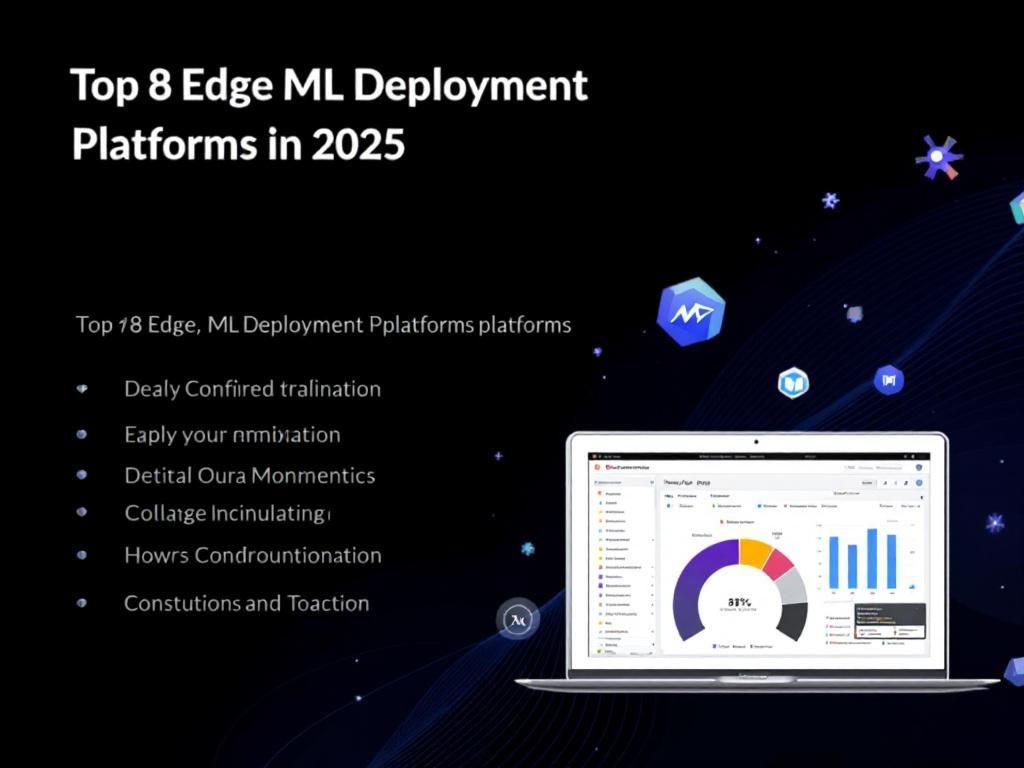As the demand for real-time data processing and intelligent applications continues to surge, edge machine learning (ML) has emerged as a critical area of focus for developers and organizations alike. By bringing computation closer to the data source, edge ML enables devices to process information immediately and efficiently, significantly enhancing decision-making and performance. In this article, we’ll explore the top eight edge ML deployment platforms that are poised to make a significant impact in 2025.
1. NVIDIA Jetson
NVIDIA Jetson is well-known for its powerful GPU-based solutions that enable AI and ML applications at the edge. The platform provides a suite of hardware and software tools tailored for deep learning, computer vision, and robotics.
Key Features:
- Support for multiple neural network frameworks including TensorFlow and PyTorch.
- High-performance computing capabilities with integrated GPUs.
- Comprehensive development tools including Jetson SDK.
2. Google Coral
Google Coral is designed to bring AI to the edge with its Tensor Processing Units (TPUs) and various hardware accelerators. The platform is optimized for low-power devices making it suitable for IoT applications.
Advantages:
- Fast inference times for ML models.
- Integration with TensorFlow Lite for deploying models effectively.
- Robust community and support from Google.
3. AWS Greengrass
Amazon Web Services (AWS) Greengrass extends AWS services to edge devices, allowing them to act locally on the data they generate while still using the cloud for management, analytics, and storage.
Benefits:
| Feature | Description |
|---|---|
| Local Execution | Run AWS Lambda functions on edge devices. |
| Machine Learning Inference | Deploy ML models locally for quick decision-making. |
| Secure Device Communication | End-to-end encryption for data in transit. |
4. Microsoft Azure IoT Edge
With Azure IoT Edge, Microsoft enables developers to deploy cloud workloads on IoT devices. This includes Azure services, custom logic, and machine learning, all performed on devices at the edge.
Key Components:
- Support for various programming languages and frameworks.
- Seamless integration with Azure services.
- Advanced analytics capabilities at the edge.
5. Edge Impulse
Edge Impulse is a specialized platform for developing edge ML applications, particularly for embedded devices. It offers an end-to-end workflow for creating, training, and deploying machine learning models.
Core Features:
- User-friendly interface with drag-and-drop functionality.
- Access to a multitude of pre-trained models.
- Ability to run on a variety of hardware platforms including Arduino and Raspberry Pi.
6. Balena
Balena is a popular platform for developing and deploying IoT applications. It allows developers to manage fleets of devices seamlessly while deploying ML models at the edge.
Highlights:
| Feature | Description |
|---|---|
| Multi-Device Management | Manage updates and configurations across numerous devices. |
| Containerization | Deploy applications as containers for portability. |
| Real-time Monitoring | Track device performance and health metrics. |
7. TensorFlow Lite
TensorFlow Lite is an open-source deep learning framework designed for mobile and embedded devices. It allows developers to run lightweight models on edge devices efficiently.
Features to Note:
- Optimized for low-latency inference.
- Support for quantization and model compression.
- Compatibility with various hardware platforms.
8. OpenVINO Toolkit
The OpenVINO toolkit from Intel is aimed at optimizing deep learning models for performance on Intel hardware. This toolkit is particularly robust for applications that require real-time inference at the edge.
Advantages:
- Supports a wide range of Intel processors, including CPUs and VPUs.
- Easy integration with existing frameworks like TensorFlow and Caffe.
- Advanced capabilities such as model optimization and acceleration.
Conclusion
As edge ML technology continues to evolve, the platforms mentioned above are positioning themselves to lead the charge in 2025. Each platform has its unique strengths and features that cater to a wide range of applications, from IoT to robotics and real-time data analytics. By leveraging these tools, developers can build intelligent applications that harness the power of machine learning right at the edge, transforming how we interact with technology in our daily lives.
FAQ
What are Edge ML deployment platforms?
Edge ML deployment platforms are software frameworks and services that enable the deployment and management of machine learning models at the edge of networks, closer to data sources.
Why is Edge ML important for businesses?
Edge ML reduces latency, enhances data privacy, and optimizes bandwidth usage, making it crucial for real-time applications in industries such as healthcare, automotive, and manufacturing.
What should I consider when choosing an Edge ML deployment platform?
Consider factors such as scalability, compatibility with existing infrastructure, ease of integration, support for various ML frameworks, and security features.
What are some leading Edge ML deployment platforms in 2025?
Some leading Edge ML deployment platforms in 2025 include AWS IoT Greengrass, Microsoft Azure IoT Edge, Google Cloud IoT Edge, NVIDIA Jetson, and IBM Edge Application Manager.
How does Edge ML benefit IoT applications?
Edge ML enables IoT applications to process data locally, resulting in faster decision-making, reduced communication costs, and enhanced performance in resource-constrained environments.
Can Edge ML deployment platforms support multiple machine learning frameworks?
Yes, many Edge ML deployment platforms support multiple machine learning frameworks, allowing developers to choose the best tools for their specific use cases.




